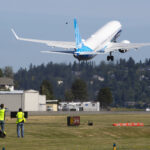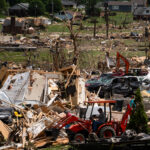District of Columbia, regional and federal officials this week introduced a state-of-the-art communications center that will serve as a command post in the event of a regional emergency.
The 127,000 square-foot center, five miles east of the U.S Capitol, could be used to coordinate rescue and recovery operations, mass evacuations or other response efforts.
“This is the perfect facility to handle regional communications if we have another sniper attack,” E. Michael LaTessa, the director of the D.C. Office of Unified Communications, said during a dedication ceremony.
During the 2002 sniper shootings and in the aftermath of the Sept. 11, 2001 attack on the Pentagon, police, fire and emergency personnel from different communities that responded were unable to communicate easily because they used different radio frequencies.
The center also will serve as the communications hub for underground emergency operations in the Metrorail system, which could involve personnel from several jurisdictions. It also eventually will be able to share wireless audio, video and text data with operations control centers in Maryland, Virginia and other nearby states.
It handles thousands of 911 emergency and 311 non-emergency calls each day. Since operators and dispatchers began working there Sept. 22, more than 16,594 calls have been received, with nearly 99 percent answered in less than one second, LaTessa said.
Communications systems in the building are clock synchronized and redundant to minimize disruptions caused by breakdowns or routine maintenance. The systems also are capable of maintaining secure communications with 18 key federal agencies, including the Department of Homeland Security and the Secret Service as well as the states of Maryland and Virginia, said Suzanne Peck, the city’s chief technology officer.
City officials began planning the $116 million center in 1998 and persuaded the federal government to kick in $24 million. District public safety personnel serve the city’s 571,000 residents as well as 22 million tourists and commuters a year, including nearly 400,000 federal workers.
“The targets are all here,” said Del. Eleanor Holmes Norton, listing the White House, the Capitol, major monuments and other major government facilities in northern Virginia and suburban Maryland.
A traffic management center also is located in the building. Following the July 4 fireworks display on the National Mall, the D.C. Department of Transportation worked with authorities in northern Virginia and suburban Maryland to test the designated evacuation routes that would be used during a real emergency.
“It’s critical for the success of the National Capital region, that Virginia, Maryland and our federal partners work … closely together,” Virginia Gov. Tim Kaine said.
The building was designed to meet federal blast-resistance standards set after the 1995 Oklahoma City bombing. The air filtration system is designed to resist biochemical contamination. As many as 350 people inside would have adequate food, water and generator power to work in the building for three days without resupply.
___
On the Net:
District of Columbia Office of Unified Communications: http://ucc.dc.gov
Was this article valuable?
Here are more articles you may enjoy.

 Boeing Reaches Nonprosecution Deal With US Over 737 Max Crashes
Boeing Reaches Nonprosecution Deal With US Over 737 Max Crashes  Trump Administration Targets Resiliency Funds to Shrink FEMA’s Role
Trump Administration Targets Resiliency Funds to Shrink FEMA’s Role  UBS Client Can’t Sue Bank Over Broker’s Alleged Affair With Wife
UBS Client Can’t Sue Bank Over Broker’s Alleged Affair With Wife  AF Group Claims Exec Embracing AI, But He Won’t Measure Success by Replacing People
AF Group Claims Exec Embracing AI, But He Won’t Measure Success by Replacing People 